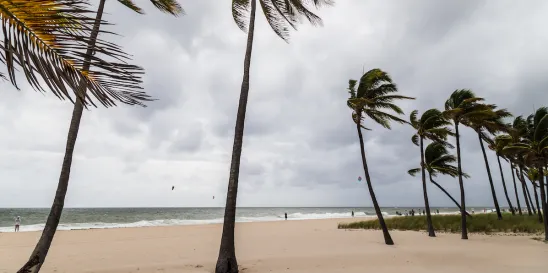On November 30, 2023, the first day of COP28, nearly 190 countries finalized the terms for the framework of a loss and damage fund to assist developing countries to respond to harms caused by climate change. The fund was first announced at COP27 last year, along with the formation of a “transitional committee” to make recommendations on how to operationalize the funding arrangements. Over the last year, there has been much debate as to how the fund should work—i.e., who should fund it and how the fund should be allocated.
A draft of the framework is provided here. Recognizing that “climate change is a common concern of humankind,” the fund’s purpose is to “assist developing countries that are particularly vulnerable to the adverse effects of climate change in responding to the economic and non-economic loss and damage associated with the adverse effects of climate change, including extreme weather events and slow-onset events.” The fund will provide funding for “economic and non-economic loss and damage associated with the adverse effects of climate change.” The fund may provide support for both short-term and long-term actions, as well as actions to address slow onset events. Examples of such funding include “the development of national response plans; addressing insufficient climate information and data, and promoting equitable, safe and dignified human mobility in the form of displacement, relocation, and migration, in cases of temporary and permanent loss and damage.”
The World Bank will manage the fund for four years, beginning in 2024. Importantly, funds will be voluntarily committed and directed to those “particularly vulnerable” to damage from climate change, and all developing countries will have access to the fund.
The fund will be governed and supervised by a board with “responsibility for setting the strategic direction, governance and operational modalities, policies, frameworks and work progra[m], including relevant funding decisions.” The Board will have 26 members, with 12 members from developed countries; three members from the Asia-Pacific States; three members from the African States; three members from the Latin American and the Caribbean States; two members from small island developing States; two members from the least developed countries; and one member from another developing country not previously included.
When making decisions, the Board is charged with considering the following:
- The priorities and needs of developing countries that are particularly vulnerable to the adverse effects of climate change, while taking into consideration the needs of climate-vulnerable communities;
- Considerations of the scale of impacts of particular climate events relative to the national circumstances, including but not limited to, response capacities of the impacted countries;
- The need to safeguard against the overconcentration of support provided by the Fund in any given country, group of countries or region;
- The best available data and information from entities such as the Intergovernmental Panel on Climate Change, and/or pertinent knowledge from Indigenous Peoples and vulnerable communities on exposure and sensitivity to the adverse effects of climate change and on loss and damage, recognizing that such data, information or knowledge may be limited for specific countries and regions;
- Estimates of recovery and reconstruction costs based on data and information from relevant entities, in particular from national and/or regional entities, recognizing that such data or information may be limited for specific countries and regions; and
- A minimum percentage allocation floor for LDCs [least developed countries] and SIDS [small island developing states].
Initial contributions to the fund were announced at COP28, including $100 million committed by each of the UAE and Germany, £40 million pledged by the UK for the fund and £20 million for other arrangements, $10 million contributed by Japan, and $17.5 million from the U.S.
Taking the Temperature: The announcement of the loss and damage fund framework was one of the key points in UAE President Dr. Sultan Al Jaber’s opening remarks at COP28, which lauded the agreement as “historic.” Though the announcement garnered considerable attention, the initial financial commitments from developed countries following the announcement fell well below the estimated amount needed on an annual basis. In addition, the current framework does not have any plan for replenishing the fund in the future. Therefore, the devil will be in the details as the fund continues to take shape, Board members are appointed, and actual action is taken to mobilize the goals of the fund.




 />i
/>i
